186049 Preisdatenbank Los(e) gefunden, die Ihrer Suche entsprechen
186049 Lose gefunden, die zu Ihrer Suche passen. Abonnieren Sie die Preisdatenbank, um sofortigen Zugriff auf alle Dienstleistungen der Preisdatenbank zu haben.
Preisdatenbank abonnieren- Liste
- Galerie
-
186049 Los(e)/Seite
Triang Minic and other tinplate clockwork Vehicles - Minic items comprise (1) Vauxhall Police Car (lacks speaker) - blue, (2) Traction Engine - green with grey plastic rollers. Also included is (3) Dux or similar German clockwork Car - maroon, (4) Japanese tinplate Vintage Car - red, lacks on headlamp - Fair. Also included is (5) Triang Minic Military Jeep - green, with US markings, (6) Triang Minic electric Railway - scarce example with pressed steel base, fitted for battery operation with removable plastic cover simulating tunnels, lacks rolling stock otherwise Good, 60cm long in the remains of a Poor illustrated box. (6)
Sutcliffe Models Kestrel electric Cruiser - battery operated tinplate model with a powder blue hull and engine cover, white deck, includes flag and 2 x clear plastic screen and 2 x mast - Excellent Plus to Near Mint in Good Plus illustrated box (some graffiti on one side), from the end of production.
Scalex No.415S Electric Speedboat - scarce example with dark green hull, white deck, removable engine cover, battery operated, lacks windscreen but includes Scalex flag and bright plated deck fittings, the motor is present but the wires require resoldering - otherwise Excellent for display in a Good illustrated box with some inner packaging and instructions.
British, German and other novelties and Trains - boxed items include Codeg Toytown Telephone Exchange with plastic extension phone (glue repaired), MS (Germany) tinplate Washing Machine, Eastern European clockwork Train layout with Railcar, German tinplate Tender Loco and Wagons, a Laurie Toys (Hong Kong) Kitchen set, coloured Dominoes, diecast Tank Engine Locomotives, Chinese Kitchen Range and others - Fair to Excellent, some items have Fair to Good Plus boxes. (12+)
Matchbox Models of Yesteryear a group to include No.Y1 Allchin Traction Engine, No.Y3 Tram "News of the World", No.Y6 AEC Open-back Pick-up "Osram Lamps", No.Y8 Sunbeam Motorcycle with sidecar plus many others - conditions are generally Good Plus to Mint (although some require slight attention in cleaning) in Good to Excellent Lesney boxes. (11)
Corgi No.1127 Bedford Simon Snorkel Fire Engine - red, silver, yellow basket - Excellent in Good lift off lid box with polystyrene base which is Good and No.64 Forward Control Jeep with working conveyor - red, grey, yellow, black rubber belt (partially broken) otherwise Good Plus, inner pictorial stand is Good Plus, outer blue and yellow carded box is Fair (complete with inner packing card. (2)
Corgi No.1127 Bedford Simon Snorkel Fire Engine - red, silver, yellow basket, spun hubs - Good Plus in Good blue and yellow picture lift off lid box, polystyrene base is Good, unboxed No.261 "James Bond" Aston Martin DB5 taken from the film "Goldfinger" No.267 "Batman`s" Batmobile - black, red bat hubs - both are generally Fair, Dinky No.353 Shado 2 Mobile - green including smooth roof, red interior, large brown rollers - Good Plus in Poor carded box and unboxed Trident Starfighter - black, orange, yellow - Fair - see photo. (5)
Scratchbuilt large scale Steam Powered frame stationary Crane constructed largely from wood with large single jib and 2 large wooden outrigger feet. Steam power is provided by a vintage vertical steam engine possibly Bing, spirit fired, twin osculating cylinders complete with burner. Overall height of legs is 20" with feet being 31" apart, jib is 40" legs, vertical steam engine is 10" including chimney with small pressure gauge, timber pieces are painted in grey and the crane jib etc can be swung round from side to side or lifted. Does need a little attention and overall condition is Good to Good Plus. A very impressive and large model.
* Bristol “Beaufighter”. A fine collection of manufacturer’s, Air Ministry press, publicity and other photographs from private sources, many inscribed to verso of this famous WWII aircraft, including some fine air-to-air aircraft portraits, new aircraft on roll-out, with torpedo, rockets and other underwing stores, cockpit and other interior details, various engine installations, the night fighter version, aircraft in service and other images, together with a selection of photographs from the same archives of the “Buckingham” and “Buckmaster”, approx. 75 images, contained in a modern ring binder (approx. 75)
* United States Air Force Supermarine “Spitfire” operations. A collection of approx. 20 photographs of Battle of Britain period and later, operations undertaken by U.S.A.F. pilots flying this aeroplane, pilots examining damage to their aircraft, ground crews carrying out an engine change, aircraft portraits and similar, together with a good collection of official and other photographs of U.S. built aircraft operated by the Royal Air Force during WWII, types include “Catalina”, “Liberator”, “Mitchell”, “Maurader”, “Reliant”, “Vengence”, “Harvard”, “Maryland”, “Hudson”, B-17, and others, approx. 75 images, contained in a folder (approx. 75)
RFC Manuals. Department of Aircraft Production. Air Board Technical Notes, Rigging Notes, [1918], numerous b & w diagram plts., orig. printed wrappers with yapp edges, 8vo, together with Air Board Technical Notes, issued by Controller Technical Department, Engine Notes, c.1918, numerous b & w diags., orig. printed wrappers, 8vo, with two portrait photographs of a serviceman loosely inserted (one modern fascimile copy) (2)
Technical. Merlin 22, 23, 24, & 25 Maintenance Manual, Rolls Royce, Derby, n.d., b&w illusts., orig. printed wrappers with linen-backstrip, rubbed and soiled, folio, together with Instructions for the Installation, Operation and Maintenance of the Wright Double-Row Cyclone 14 Aircraft Engine, model GR-2600A, 2nd ed., Paterson, New Jersey, August 1940, b&w illusts. and folding plans at rear, orig. wrappers, rubbed, 4to, plus Armstrong Siddeley Handbook for the Operation and the Maintenance of the Cheetah X Aero Engine, Coventry, n.d., b&w illusts. and folding plans, sellotape repairs to hole punches, orig. cloth ring binder, rubbed, 8vo, plus a quantity of assorted technical aviation manuals and handbooks, mostly post-war (3 cartons)
Schneider Trophy 1931. An historically important group of three 78 rpm recordings by the three most important men involved in the 1931 Schneider Trophy Contest which Great Britain won outright, retaining the Trophy in perpetuity having won the race three times consecutively (1927, 1929 & 1931), viz. R.J. Mitchell, aircraft designer, A.J. Rowledge, Rolls-Royce engine designer, and Flight Lieutenant J.N. Boothman, pilot. Recorded on HMV 12 inch yellow label “Private Record” discs, but never issued commercially, the British Library Sound Archive is believed to hold copies, probably given to them for posterity by R.J. Mitchell’s son, Dr. Gordon Mitchell. Each recording is introduced by a professional narrator in typical period “BBC” style, and lasts just over four minutes. A set of CD recordings is being sold with this lot.. R.J. Mitchell (part transcription). “... in a very few words I will endeavour to describe one or two of the interesting features of the S6B and also some of the problems of the designer. In the design of a seaplane of this type, the one outstanding and all important requirement is speed, every feature has to be sacrificed to this demand. The result of this is that every part of the aircraft just, and only just, fulfils its requirements... It is not good enough to follow conventional methods of design, it is essential to break new ground and to invent and involve new methods and new ideas... The floats are made so small for the load they have to carry that their reserve buoyancy is less than 40%. The usual reserve buoyancy for seaplane floats is about 100%. The cooling of the engine presents many interesting features. The usual methods employed either by air cooling or by means of honeycomb radiators have very high air resistance, on the S6B the engine is cooled without adding any air resistance. The cooling water is circulated over both surfaces of the wings and most of the surface of the floats, the covering being of a special double-skin construction. Similarly, the oil is circulated along the sides of the body and over the surface of the fin. During flight heat equivalent to 1000 horsepower is being given to the air from these surfaces. The S6B has been aptly described as a flying radiator... I must express the very greatest admiration for the pilots of the High Speed Flight of the Royal Air Force who carried out trials and operated these machines. Their job required great courage and great skill and they played a very important part in developing the machines to their final state. The question is often asked, will higher speeds be attained in the future, I feel quite sure they will. The problems of still higher speeds are no more intense at this stage than they have been at any period in the past. For the present, however, it is generally considered that high speed development has served its purpose. It has accumulated an enormous amount of information which is now being used to improve the breed of everyday aircraft. It is helping to develop our great airlines and ocean-going flying boats and is thus bringing closer together the outlying parts of the British Empire. This indeed is an objective worthy of all our greatest efforts”. A.J. Rowledge (part transcription). “It was not until Lady Houston so generously came forward with her offer to defray the cost of the machines that the decision was made for Great Britain to take part in the 1931 Schneider Trophy contest. This indecision might easily have been fatal to our chances as very little time, only seven months was left for the development of the design to the new standard and the construction of the actual racing engines In preparing the engines for the 1929 contest we were in many ways at the beginning of a development of this particular engine. In 1931 we had more knowledge and data to enable us to tackle the job but at the same time we had a smaller field for development. The 1931 engine, besides giving more power was a more efficient engine than its predecessor... almost every piece of material in the engine is working at its limit of stress or heat capacity, even for the short life required for such an engine We think it will be agreed by most people who saw the engines perform that they did their work in quite a gentlemanly fashion, and that besides giving good power, they were docile and ran smoothly.Looking at the engine, it is perhaps difficult to believe that the engine fitted to it can possibly give more power than a railway engine which has such an imposing size and weighs so many tonnes In conclusion the satisfactory result was due to team work, and in addition to the people already mentioned, a word of praise is due to the suppliers of the materials and the work people”. Arthur Rowledge (1876-1945) joined Napier & Son in 1913 as Chief Designer. After designing car engines and, more notably, the Napier Lion aero engine, Rowledge took up a similar position at Rolls-Royce Limited in 1921, where he became known as “Rg” in company shorthand. He is credited with designing the Condor III, Kestrel and the Rolls-Royce R racing engine, that was used with great success at the 1929 and 1931 Schneider Trophy races. Development work on the Merlin engine was one of his last contributions to aero engine design along with responsibility for the Exe and Pennine projects, before retiring from Rolls-Royce in 1945 at the age of 70. J.N. Boothman (full transcription). “It is rather difficult to record impressions after an event such as the Schneider Trophy Contest because, at the time, one is concentrating so utterly on the job in hand that the prospect of having to make a record later does not enter one’s head. For the contest last year, the former navigability test had been abolished and replaced by a take off, a climb to 50 metres and an alighting, following which the machine had to taxi for about 2 minutes before taking off to cross the starting line of the speed test proper. These new conditions meant a take off at full load, always an extreme test of a racing seaplane, followed by an alighting and a take off at practically full load. On September 13th 1931, the day when the contest was flown, the weather conditions were fairly good, the sea being rather rough but improving rapidly. After a preliminary flight, to test the conditions, I took my seat in the Vickers Supermarine Rolls-Royce S6B and was slipped from the pontoon as the starting gun was fired at 2 minutes past one. The first take off was effected in 40 seconds, the machine making no difficulty about lifting her 6000 pound weight despite the enormous loading of nearly 42 pounds per square foot of wing surface. As soon as we were off the water, the engine with throttle down to half speed in order to conserve fuel, and a left hand circuit made. Over Cowes, the throttle was shut and an alighting made close to the take off position. In spite of the heavy load and the high landing speed of about 110 mph or more, the floats took the rough-ish water beautifully. After taxiing, throttle right down for the specified time, the second take off was started. This one was not so pleasant, the floats running into the wash left from my first effort, the machine receiving rather a hammering from the rough water. Forty seconds saw us in the air again and after a right hand turn, the nose was pointing at Ryde Pier, the starting line of the speed course. This course consists of seven triangular laps of just over 31 miles each. With the throttle wide open we passed over the pier towards the destroyer marking the southern turn near Bembridge in the Isle of Wight, then a gentle left hand turn around the pylon and across the eight miles of open sea to Wittering. The sea here was bad, a heavy swell rolling in from the Channel making any hopes of a successful forced alighting rather small. However the clock-like running of the engine and the perfect way th
* Mitchell (R.J.). A group of personal effects, including RJ’s tan leather briefcase with tooled initials “RJM” to front, also including a passport in the name of Reginald J. Mitchell, counter-signed in ink by Anthony Eden (Foreign Office) authorising the holder “To Pass without Hindrance”, dated 25th November 1936, his address-book, leather wallet, two personal pocket day-diaries dated 1936 & 1937 (died Friday June 11th 1937), variously annotated in his hand with appointments, personal contacts & addresses, a few technical notes on Merlin and other engines and aircraft components, details of meetings with associated Spitfire-related engine warm-ups, meetings with Air Vice Marshall Tedder and the Air Board, mention of F37/35 Flying (Spitfire), and other personal activities including sporting events etc., plus RJ’s birth, marriage and death certificates, etc. (-)
* [Camm, Sydney]. General Arrangement drawing of a proposed Hawker single-seat, low-wing cantilever monoplane fighter, original pencil drawing on tracing paper, old damages, now mounted on card, 24.5 in x 28.5in (62.2cm x 72.3cm), together with Sopwith Aviation Co. Ltd, Triplane Bomber “Rhino” general arrangement drawing similarly damaged, but mounted and protected, 27 in x 39.25in (68.5cm x 99.6cm), each with descriptive labels. In February 1925 at Kingston-upon-Thames, Sydney Camm drew up the basic design for a Hawker single-seat, low-wing cantilever monoplane fighter, to be powered by a Bristol Jupiter and armed with a pair of Vickers guns. This design was never built due to the lack of faith in the monoplane design. The Sopwith 2.B.2 Rhino was a Kingston prototype of 1917 intended as a two-seat day bomber. X8 was the sole example constructed and carried the 230hp B.H.P. engine in its nose, flanked by low-set radiators. The ponderous and ungainly Rhino relied on the ground on a tiny undercarriage unit which further contributed to the machine’s unlovely appearance. (2)
* Hawker “Harrier”. “Broken refuelling cable”. A dramatic scene of a United States Navy “Harrier” aircraft trailing a broken refuelling line, original gouache, heightened with white, 12 1/4 in x 15 3/4in (31.2cm x 40cm) unsigned, together with B.A.C. “Hawk” L5120, undergoing an engine change, original watercolour on artist’s board, heightened with white, 20 1/4 in x 25 1/2in (51.4cm x 64.7cm) unsigned, and seven issues of Harrier Force and a Hawk 200 brochure (-)
* WWI. de Havilland Aircraft Co. A group of original hand-drawn plans for aircraft of the RFC during the Great War 1917-1918, small-format scale-drawn depictions of aircraft types including DH2, DH4, DH5, DH6, DH9, DH9A (with engine variants) and DH10, each drawn in pencil on art-paper from front and profile perspective, with specifications of measurement, flying-surface area, engine types etc, each initialled by the draftsman “CESL” and manuscript captioned “The Aircraft Manufacturing Co” and variously dated 1917 & 1918, some additionally annotated with mathematical calculations etc., clear imagery, comprising 4 double-spread-sheets and a larger single-sheet, largest 16 x 30in (41 x 76cm) (5)
* Powder Compact. A fine silver and enamel powder compact, maker J.W.B., Birmingham, 1939, the interior with powder applicator and mirror, the cover engine-turned enamelled in blue with finely modelled R.A.F. pilot’s wings, the underside with engine turned decoration, engraved “To Mother from Doug 1940”, with original protective lined wallet, 7.6cm square (1)
* Roberts Aero Engine. A very rare early 20th c. pioneer aeroplane engine, Type 4X 50HP by Roberts Motors Ltd, Sandusky Ohio, USA c. 1910, four-cylinders in-line, water-cooled two-stroke motor, of lightweight aluminium and special alloys construction, having separate cast cylinders surmounting a crankcase jointed along the crankshaft centre-line, featuring exposed gear-train to rear for magneto-drive, water-pump and other ancillaries, having engraved maker’s plate to no.1 cylinder-barrel inscribed “Model 4X 50hp No 135” appears good condition and almost complete with all internals, fitted with Bosch Magneto type 4DU model 2, inlet manifold (lacking carburettor), and mounted upon a painted steel display frame. Roberts Motors Ltd founded by Edwin Roberts pioneered the use of lightweight aluminium and secret magnesium alloys of his own conception designated “Aerotite” and “Magnalium” in the construction of these engines of his own advanced design. Based on the lakeshore at Sandusky in Ohio, his engines were initially used in early float-planes and hydroplanes built by the nearby Curtiss Aeroplane Company for private and military purposes. Another constructor Thomas Benoist flew his own float-plane powered by this type of motor on an early record-flight from Omaha to New Orleans in 1912. Surviving examples of this type can be seen in the Smithsonian Institute and National Air & Space Museum, in the USA. (1)
* Short Sunderland Flying-Boat. An original Cylinder-barrel Souvenir from Pratt & Whitney radial engine, c. 1930s, previously removed from Sunderland Flying-boat, heavily finned monobloc incorporating cylinder head (lacking valve-gear) & machined steel barrel. This cylinder barrel was removed from one of the engines powering the last remaining active-flying Short Sunderland flying-boat, after mechanical problem at Calshott in 1990. (1)
-
186049 Los(e)/Seite







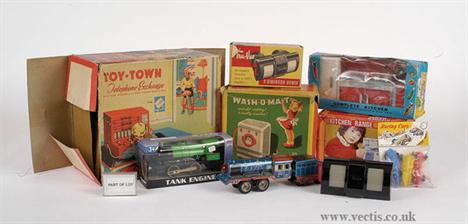







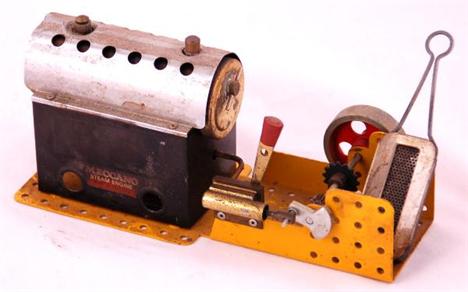










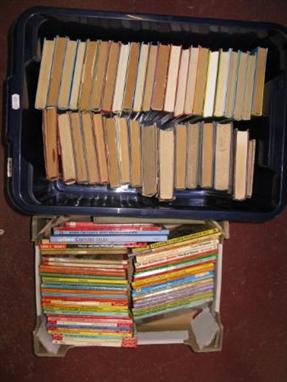

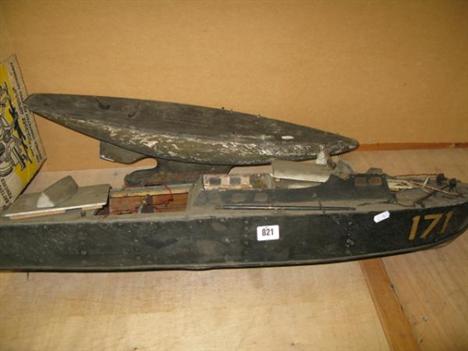




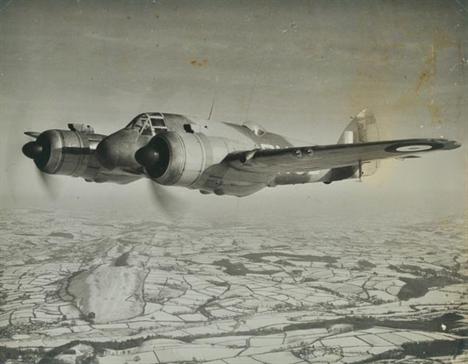



![* [Camm, Sydney]. General Arrangement drawing of a proposed Hawker single-seat, low-wing cantilever monoplane fighter, origin](http://lot-images.atgmedia.com/SR/10729/2793276/226-2010427101252_468x382.jpg)






